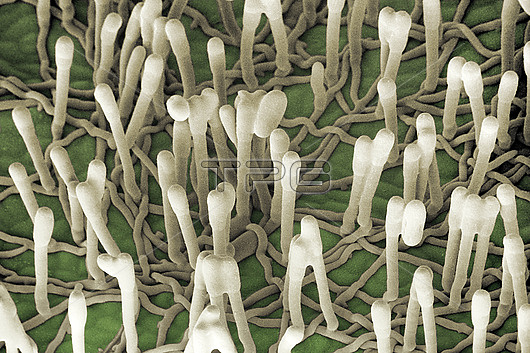
Scanning electron micrograph of Erisyphe pisi on a leaf of a garden pea, Pisum sativum. The picture shows the leaf surface covered with a network of threads ( fungal hyphae) from which arise upright stalks, the conidiophores, each terminating in a cylindrical capsule, containing conidia (spores). E. pisi is an ascomycete fungus; its visual appearance on leaves gives rise to the name powdery mildew. Its life cycle begins when a spore lands on a leaf. The spore first produces an anchor, the appressorium, and then a tube that penetrates the leaf to produce a haustorium, that extracts water from the leaf cells. A network of surface hyphae is then developed, followed by conidiophores, as here. Although exposed to the air, the fungus is resistant to dry conditions, and is a serious pathogen of peas. Other Erisyphe spp are pathogens of grasses, including cereal crops. Mag x 260 at 10x8
| px | px | dpi | = | cm | x | cm | = | MB |
Details
Creative#:
TOP26364563
Source:
達志影像
Authorization Type:
RM
Release Information:
須由TPG 完整授權
Model Release:
N/A
Property Release:
N/A
Right to Privacy:
No
Same folder images:

 Loading
Loading